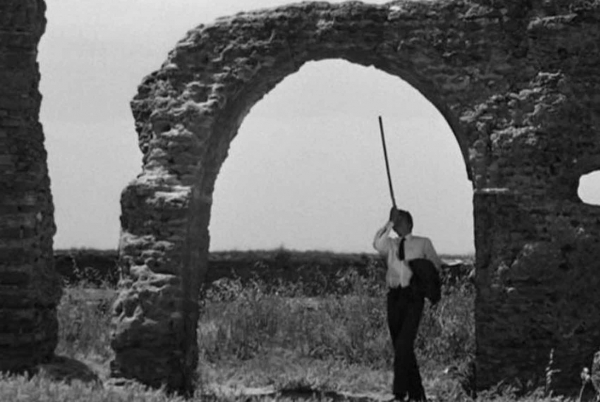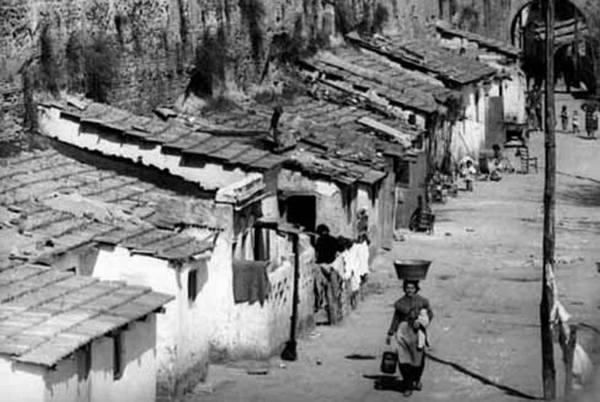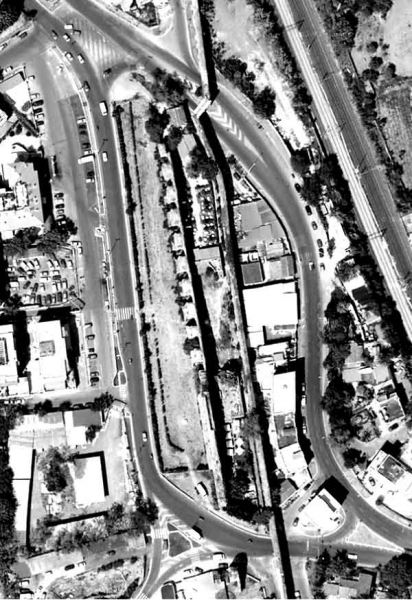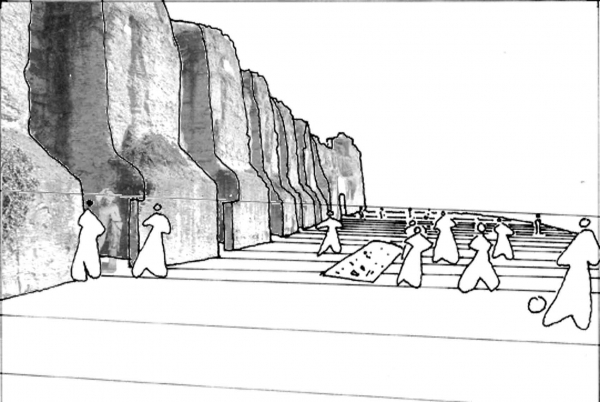Parallax
Re Appropriating the Acqua Felice
----------------------------------------------------------------------------------------------------
The proposed intervention re-orients the Acqua Felice from an invisible source of vitality into a framing piece of infrastructure that makes present its previously unseen elixir. The intervention is bi-fold.
Firstly, a new courtyard, the "Neptune Courtyard," is established in the space between the Acqua Claudia, the Acqua Felice, and two restaurants to the north and south. The ground is leveled and a series of terraces negotiate the grade change from the level of the restaurants to the new grade level of the court. In the centre of the space a new fountain is placed, topped with the statue of Neptune from Piazza Novona. The niches of the Acqua Felice are finished and sculpture from the bath of Diocletian showing water in domestic uses are placed; specifically the Old Fisherman with bag in left hand, and Women with a hydra. The Neptune Courtyard is a place of repose juxtaposing the mythological, the domestic and the infrastructural mechanisms of water.
Second, the open space flanked by the Aqcua Claudia and Via Frascati is paved over, and the fencing, currently on site, is removed. The new piazza, "Piazza Claudia," with a statue of a drunk Dionysus in the northern most niche, provides a Tabla Rasa for the surrounding community to take up and utilize. Market stands can be inserted into the remaining niches, vendors can set up stands, and local children can play games of football. Large public gatherings have the opportunity to take place here as well, in a similar fashion as those that take place at the Circus Maximism.
The project celebrates both the capacity of the Acqua Felice as a means of providing water and vitality, as well as its state as a physical artifact that acts a framework and backdrop for urban life to unfold in front of and within.
"It was the strong-willed Sixtus V, however, who left his mark upon Rome more indelibly than any other pope of the Counter-Reformation. An ambitious, not to say ruthless, town-planner, he achieved so much in his short reign from 1585 to 1990 that men supposed him to have been considering the transformation of the city long before his election. Certainly it seems that, although he was the son of the poorest parents and had spent his early years as a swineherd in the bleak mountains of the Marche, he had for long believed that he, Felice Peretti, would one day rise to supreme authority in the Church. Sixty-four at the time of his election, in poor health and suffering from persistent insomnia, he undertook the task he had set himself as though he had no time to lose. He first restored the city’s water supply, mending Alexander Severus’s aqueduct, the Acqua Alexandrina – renamed after himself the Acqua Felica – as well as the underground pipes which led form Palestrina, thus providing an ample source for the houses and gardens and the twenty-seven fountains of Rome."
Christopher Hibbert
3000 years of her history from the Etruscan Kings to Mussolini

Sixtus V with Architects © Bettmann/CORBIS

Still from Mamma Roma

via del Mandrione c.1950 web image

Site Bing Maps

People's Plaza

Neptune Court
